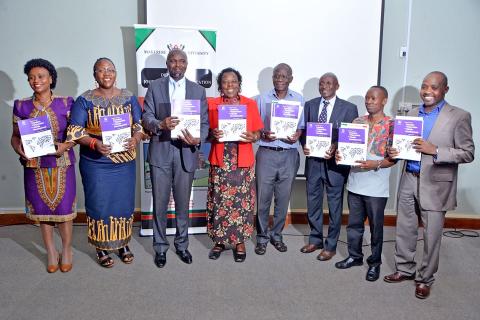
At least two journalists are killed every week, according to a newly released UNESCO global report.
The UNESCO World Trends in Freedom of Expression and Media Development 2017/2018 report indicates that between 2012 -2016 over 530 journalists were killed.
The report on World Trends in Freedom of Expression and Media Development was launched at Makerere University on 14th March 2018.
The report indicates that there are growing attacks on journalists and continued legal restrictions including criminal laws.
According to Lydia Gachungi, the Regional Expert for Safety of Journalists and Media Development, UNESCO Regional Office for Eastern Africa, killings of women journalists doubled during the period, from five women journalists in 2012 to 10 journalists in 2016.
Other key highlights include; increased hate speech, with content seen to encourage violent radicalism, and cyber security concerns among others.
While officially launching the report, Commissioner Meddie Mulumba, from the Uganda Human Rights Commission said that the attacks on journalists and illegitimate restrictions on media freedom by governments inevitably impacts negatively on general freedom of speech and expression of individuals.
He however added that while there are constant calls on government agencies to respect fundamental freedoms of expression, journalists who are enablers in the enjoyment of these rights should not abuse them.
“The occasion should also be used by all media practitioners to re-commit themselves to raise the bar of their professionalism by adhering to their professional ethical code and guard against misusing their important role as enablers of the enjoyment of the right to information in their respective communities,” he said.
Prof. Rune Ottosen, who represented the Norwegian UNESCO Commission at the event, expressed concern over the increasing restrictions of freedom of expression adding that despite UNESCO’s steps towards the formalization of a system of focal points for safety of journalists, this report is living proof that there is a lot that needs to be done.
According to Prof. Ottosen, the report only captures foreign correspondents because of the publicity they attract but a number of local journalists are overwhelmingly being killed while reporting on local expressions of war, corruption and other activities of criminal groups.
He however, said that there is willingness eradicate impunity and harassment of journalists. “In the report presented here today UNESCO notes with satisfaction that there is increased willingness among countries to cooperate on protection of rights to journalists,” he said.
The report also indicates the increasing gender gap in the media representation. TheNorwegian Ambassador to Uganda, H.E Susan Eckey condemned the women under-representation of women in the media workforce, especially in the decision making roles that results into biased media content.
She called for further intervention of civil society organisations to promote the voice of women in the media.
The report launch was preceded by a panel discussion comprised of Prof. Goretti Nassanga, Prof. Fredrick Jjuuko, and Daniel Kalinaki; and moderated by Charles Mwanguhya. The discussion contextualised media freedom in Uganda and among other things emphasized the need for continued professionalism in Uganda's media industry. The panelists observed that Journalists in Uganda have continued to be detained under unclear circumstances, and called upon government to embrace the media profession as partners in development.
\
- Log in to post comments




